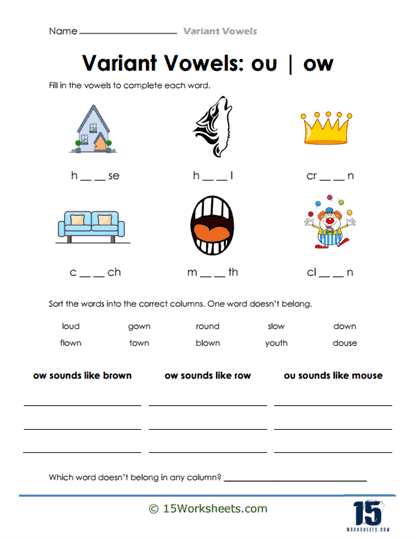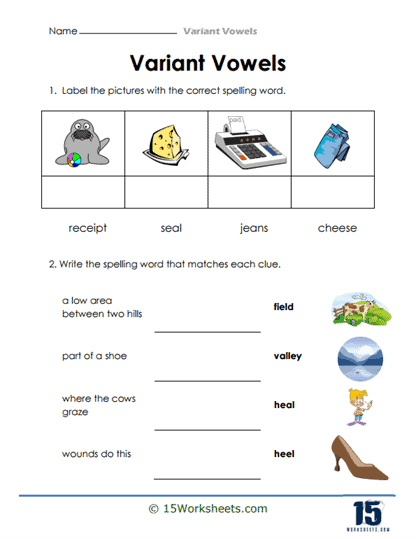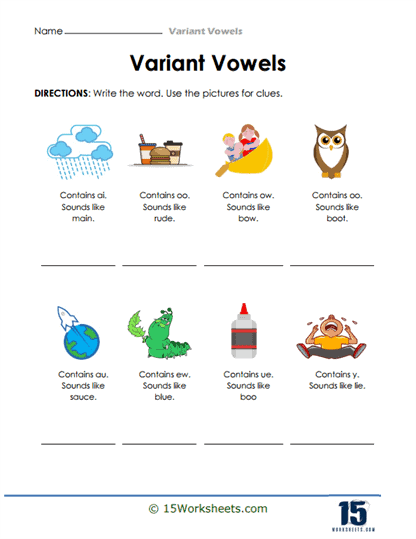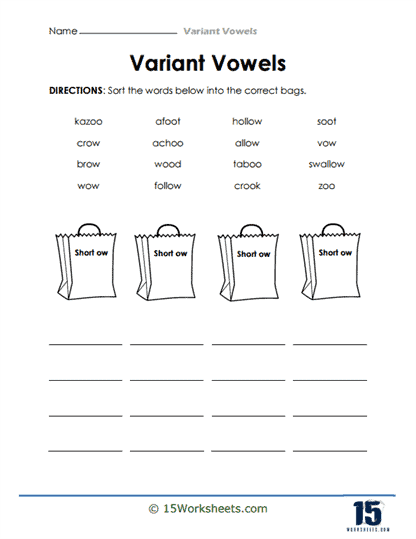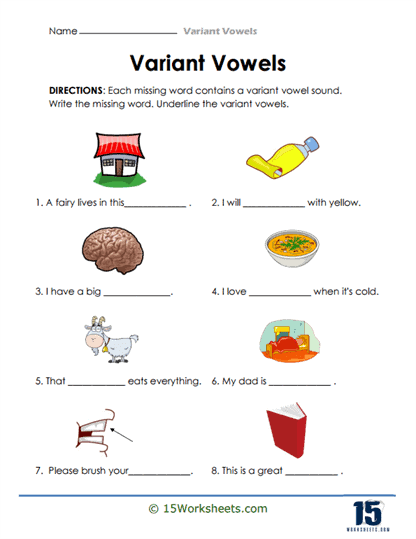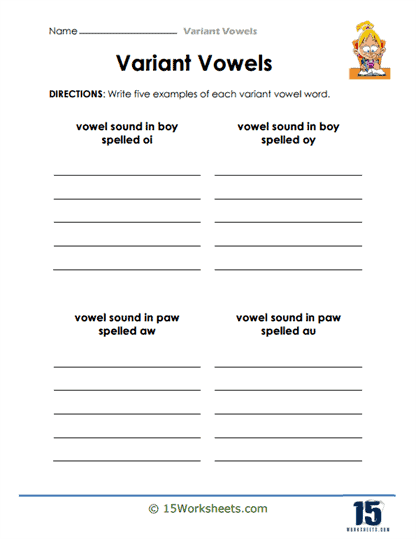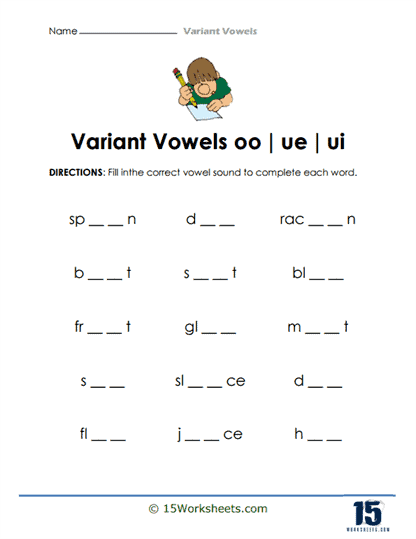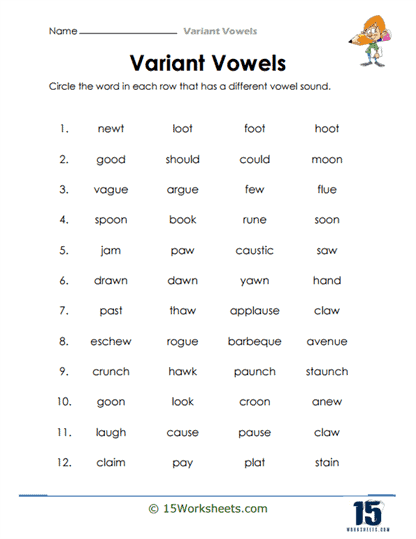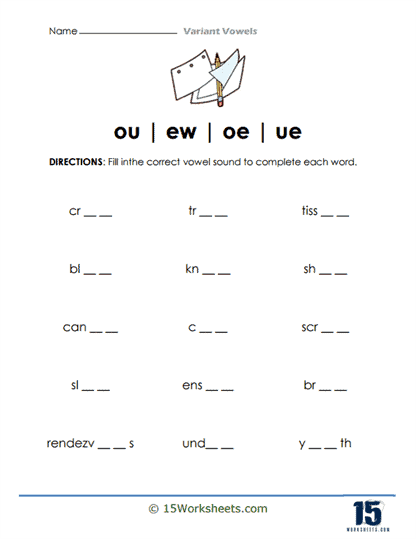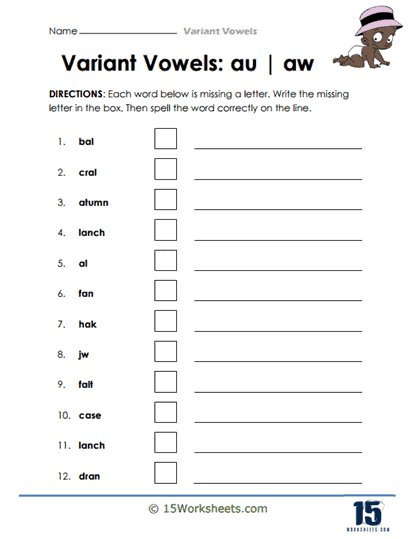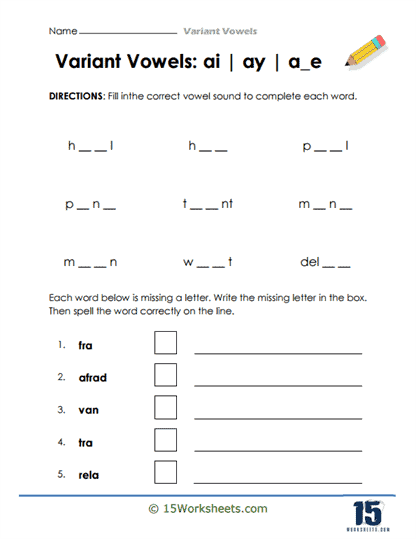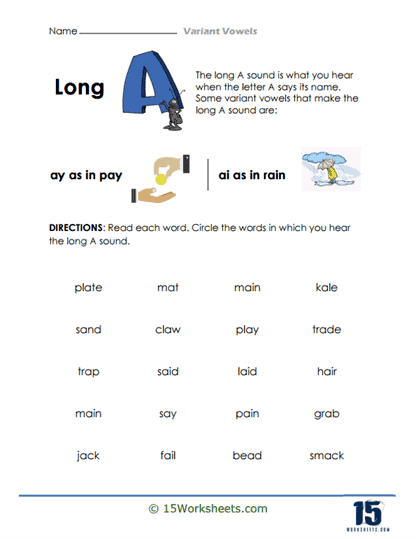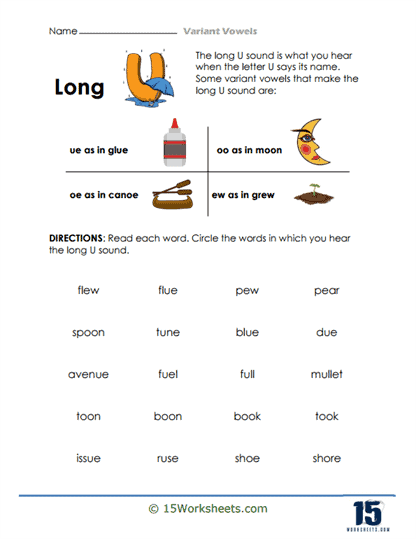Variant Vowels Worksheets
All About These 15 Worksheets
Variant vowels, often referred to as vowel teams or vowel combinations, are a fascinating aspect of phonics and early literacy education. These combinations of vowels together create unique sounds in words, and understanding them is essential for young learners. Mastery of variant vowels is pivotal for reading, spelling, and overall language development.
To empower students with the skills needed to navigate variant vowels effectively, we proudly present a collection of Variant Vowels worksheets. These worksheets are thoughtfully designed to provide students with structured and engaging opportunities to practice and refine their understanding of variant vowels.
What are Variant Vowels Worksheets?
Variant Vowels Worksheets are educational resources designed to help students practice and learn about variant vowels, which are vowels that are pronounced differently than their usual sound. Examples of variant vowels include the “a” sound in “ball” and the “o” sound in “fork”. These worksheets often include various activities, such as matching, sorting, or writing exercises, that focus on identifying and distinguishing between words that contain variant vowels.
What Are Variant Vowels?
Variant vowels refer to vowel sounds in the English language that don’t fit neatly into the categories of short or long vowels. These sounds, also known as r-controlled vowels, diphthongs, or vowel digraphs, often involve combinations of two vowels or a vowel and a consonant that produce a unique sound.
R-controlled Vowels – When a vowel is followed by the letter “r,” the “r” influences the vowel’s pronunciation, creating a distinct sound. Examples of r-controlled vowels include “ar” in “car,” “er” in “her,” “ir” in “bird,” “or” in “corn,” and “ur” in “turn.”
Diphthongs – Diphthongs are vowel combinations in which two adjacent vowels blend together to produce a single sound. Common diphthongs in English include “oi” in “boil,” “ou” in “house,” “ow” in “cow,” “oy” in “toy,” “au” in “haunt,” and “aw” in “saw.”
Vowel Digraphs – Vowel digraphs consist of two vowels that appear together in a word and produce a unique sound. Examples of vowel digraphs include “ea” in “beach,” “ee” in “meet,” “ie” in “piece,” “oa” in “boat,” and “ui” in “fruit.”
Understanding variant vowels is crucial for reading, writing, and pronunciation, as they form an essential component of the English language’s sound system. By learning to recognize and produce these sounds, language learners can improve their fluency and comprehension.
The Importance of Variant Vowels
Understanding and mastering variant vowels is of great importance for several reasons:
- Reading Proficiency: Accurate recognition and pronunciation of variant vowels are fundamental for fluent reading. They enable students to decode words correctly and comprehend text effectively.
- Spelling Competence: Proficiency in spelling words with variant vowels enhances students’ overall spelling skills. When they can accurately identify and use these combinations, they are better equipped to spell words correctly.
- Phonemic Awareness: Recognizing and manipulating variant vowels fosters phonemic awareness—the ability to identify and manipulate individual phonemes (sounds). This skill is crucial for literacy development and reading comprehension.
- Vocabulary Growth: Learning and using words with variant vowels exposes students to a wider range of vocabulary, enriching their comprehension and language skills.
This collection of Variant Vowels worksheets is a valuable resource for educators and parents committed to supporting their students’ phonics and literacy development. Proficiency in recognizing and using variant vowels is a foundational skill that opens doors to reading fluency, comprehension, effective spelling, and vocabulary growth.
By using these engaging worksheets, students will strengthen their ability to recognize and use variant vowels with confidence. This collection is an investment in their future success, ensuring they have a solid foundation in phonemic awareness, phonics, spelling, and vocabulary.

